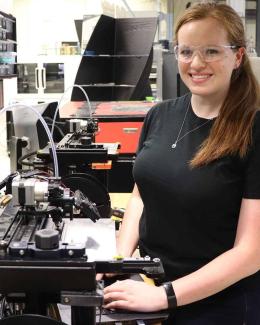Abstract
Directed energy deposition (DED) is increasingly considered for manufacturing aerospace components and mold tooling with internal cooling channels, and for repair applications, but the design space of DED is limited: steep overhangs and bridge geometries are difficult or impossible to manufacture because support structures must be rigid and monolithic. Dissimilar metals may be used as supports, but these have proven difficult to manufacture and remove. Polymer supports in DED could provide a lower-cost, easily removable alternative, but the suitability of polymer substrates for DED components has not been explored. Crucial to the viability of this concept is understanding the thermal and mechanical stability of metal deposition onto polymers, and the properties of the solidified metal. Here, the deposition of 316L stainless steel onto carbon-fiber-reinforced ABS is investigated. Solid, box-shaped structures were manufactured with different inter-layer cooling times to study the interface between the metal and polymer composite and to determine the effect on the metal of the formation of carbonaceous polymer char generated during the DED process. Micro-hardness measurements across components with varying inter-layer cooling times were critically analyzed and correlated to the underlying structural changes in 316L at the interface. Due to the infiltration of char, the hardness of the metal directly adjacent to the polymer composite substrate was over 60% greater than the expected hardness value of deposited 316L stainless steel in the component with no interlayer cooling time.




